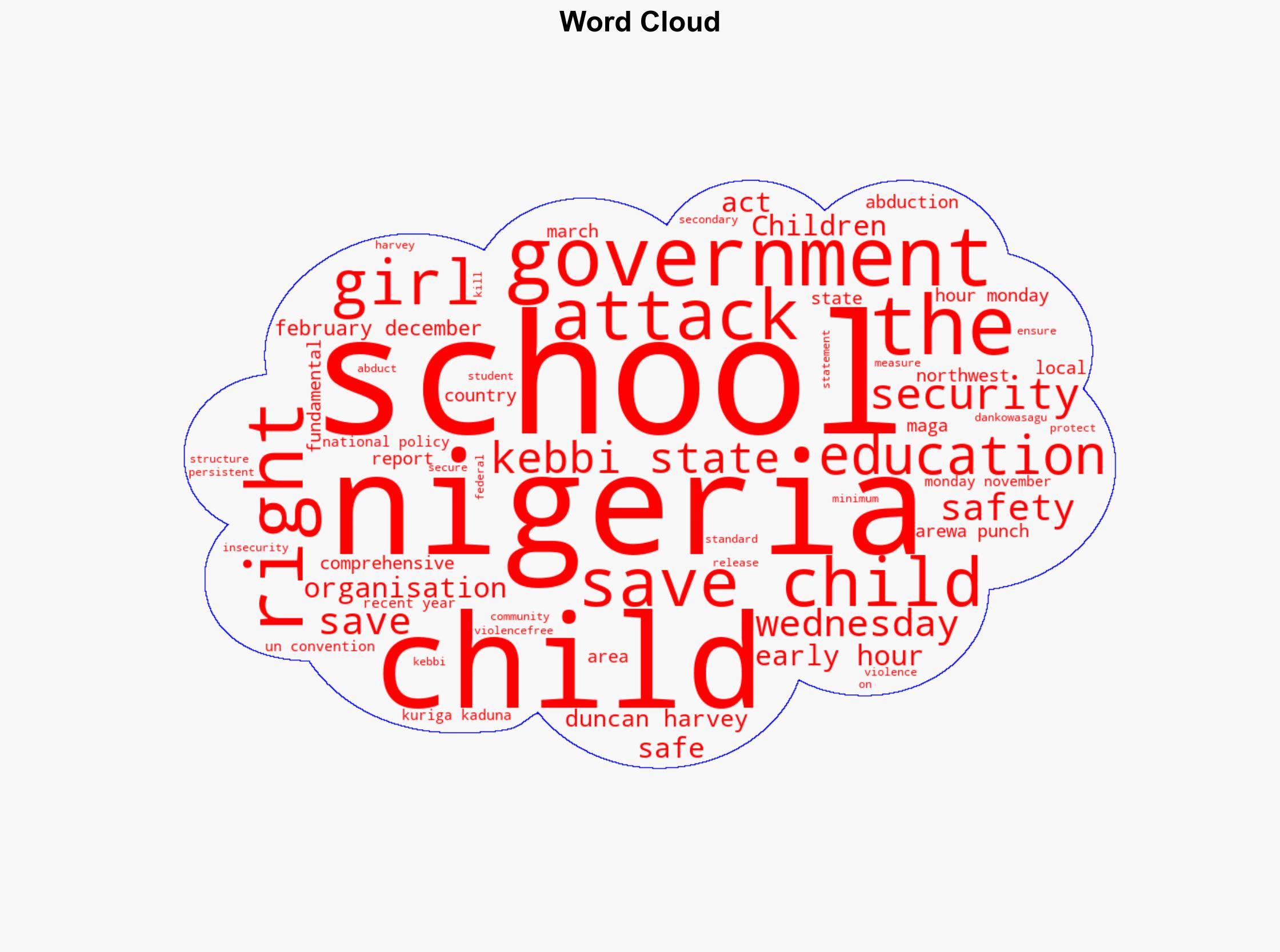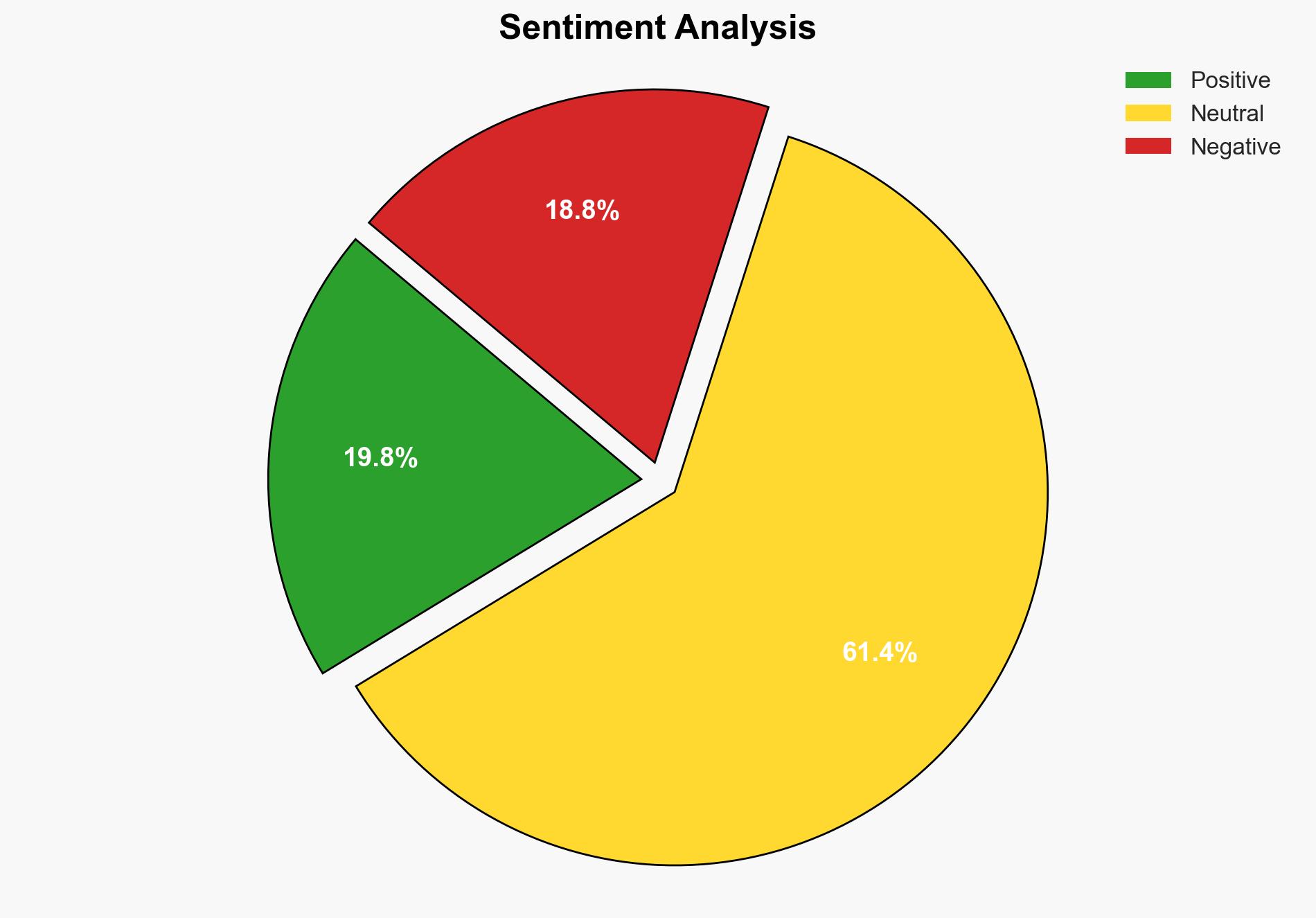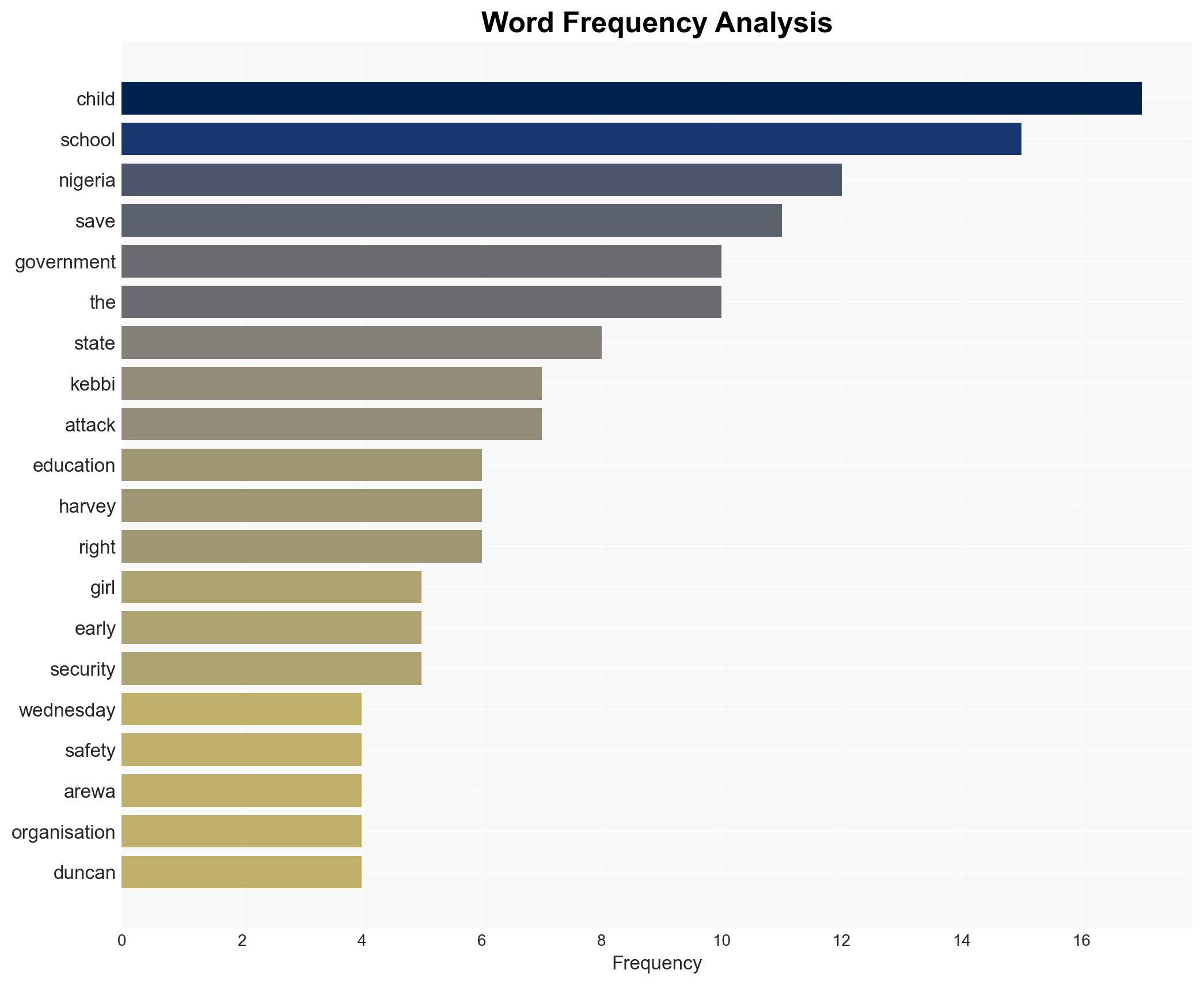NWest schools hit by 49 attacks 184 students killed in eight years – The Punch
Published on: 2025-11-21
AI-powered OSINT brief from verified open sources. Automated NLP signal extraction with human verification. See our Methodology and Why WorldWideWatchers.
Intelligence Report:
1. BLUF (Bottom Line Up Front)
With a moderate confidence level, the most supported hypothesis is that the persistent attacks on schools in Northwest Nigeria are primarily driven by organized criminal groups seeking financial gain through ransoms. Strategic recommendations include enhancing intelligence-sharing mechanisms, strengthening community-based protection structures, and implementing comprehensive security measures in high-risk areas.
2. Competing Hypotheses
Hypothesis 1: The attacks are primarily motivated by organized criminal groups aiming to extract ransoms from the government and families.
Hypothesis 2: The attacks are ideologically driven by extremist groups aiming to disrupt education and instill fear in communities.
Hypothesis 1 is more likely given the pattern of abductions followed by ransom demands in past incidents. While ideological motivations cannot be entirely ruled out, the financial incentives appear to be a more consistent driver of these attacks.
3. Key Assumptions and Red Flags
Assumptions: It is assumed that the attackers have the capability and intent to continue these operations. The effectiveness of government responses and community resilience is presumed to be variable.
Red Flags: The potential for misinformation or underreporting of incidents due to local government interests. The lack of transparency in ransom negotiations could obscure the true motivations behind the attacks.
4. Implications and Strategic Risks
The continuation of these attacks poses significant risks to regional stability, potentially leading to increased displacement, disruption of education, and long-term socio-economic impacts. Politically, the government’s perceived inability to protect its citizens could undermine public confidence and exacerbate tensions. Economically, persistent insecurity may deter investment and development in the region.
5. Recommendations and Outlook
- Enhance intelligence-sharing and coordination between federal and state security agencies to preempt attacks.
- Invest in community-based protection structures and early warning systems to improve local resilience.
- Implement comprehensive security measures in schools, including physical infrastructure improvements and security personnel training.
- Best-case scenario: Successful implementation of security measures leads to a significant reduction in attacks.
- Worst-case scenario: Escalation of attacks results in widespread displacement and further destabilization of the region.
- Most-likely scenario: Continued sporadic attacks with gradual improvements in security response and community resilience.
6. Key Individuals and Entities
Duncan Harvey, Country Director, Save the Children Nigeria.
The Federal Government of Nigeria.
The Kebbi State Government.
7. Thematic Tags
Structured Analytic Techniques Applied
- Cognitive Bias Stress Test: Expose and correct potential biases in assessments through red-teaming and structured challenge.
- Bayesian Scenario Modeling: Use probabilistic forecasting for conflict trajectories or escalation likelihood.
- Network Influence Mapping: Map relationships between state and non-state actors for impact estimation.
Explore more:
National Security Threats Briefs ·
Daily Summary ·
Support us





